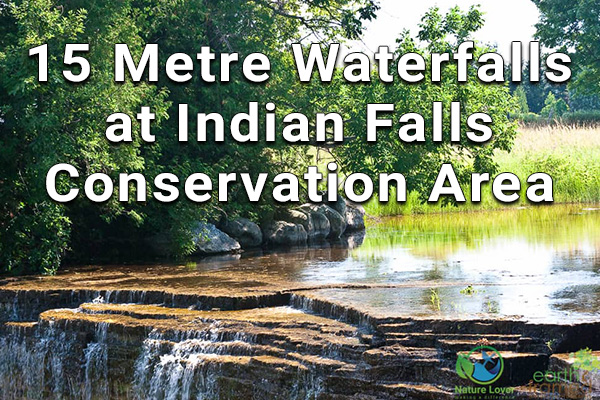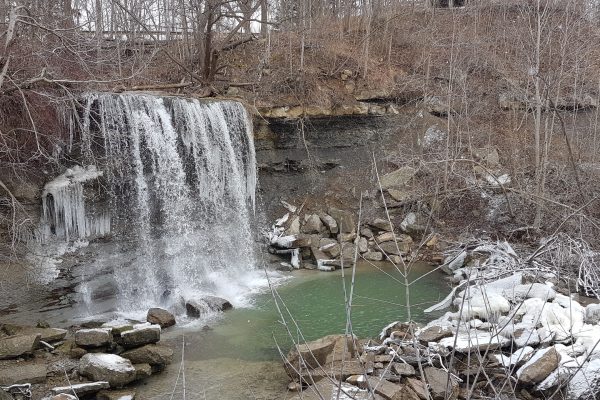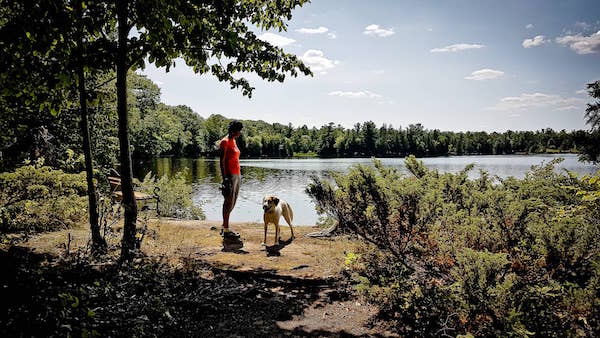Who doesn’t like to stop at waterfalls? There are a lot of different waterfalls in the Bruce Peninsula and while we are up camping and hiking in the area we love to stop at as many as we can. Waterfalls are great because they look different each time you visit them. Maybe there’s no leaves on the trees, not very much water flowing over the falls or perhaps a piece of the falls has fallen or eroded since the last time you visited it.
The Indian Falls Conservation Area is located just north of Owen Sound, which is home to a few of it’s own waterfalls, like Inglis Falls. This is a great area to explore various trails, parks and to visit a number of very different sized and shaped waterfalls.
Visitors should park in the parking area and follow the signs that are easy to spot. The trail itself is only .8 kilometres long (on way) but leads to a fairly steep incline to take you to the top of the falls. The terrain is rocky and would not be suitable to bikes, strollers or wheelchairs. The trail is closed in the winter time for safety reasons.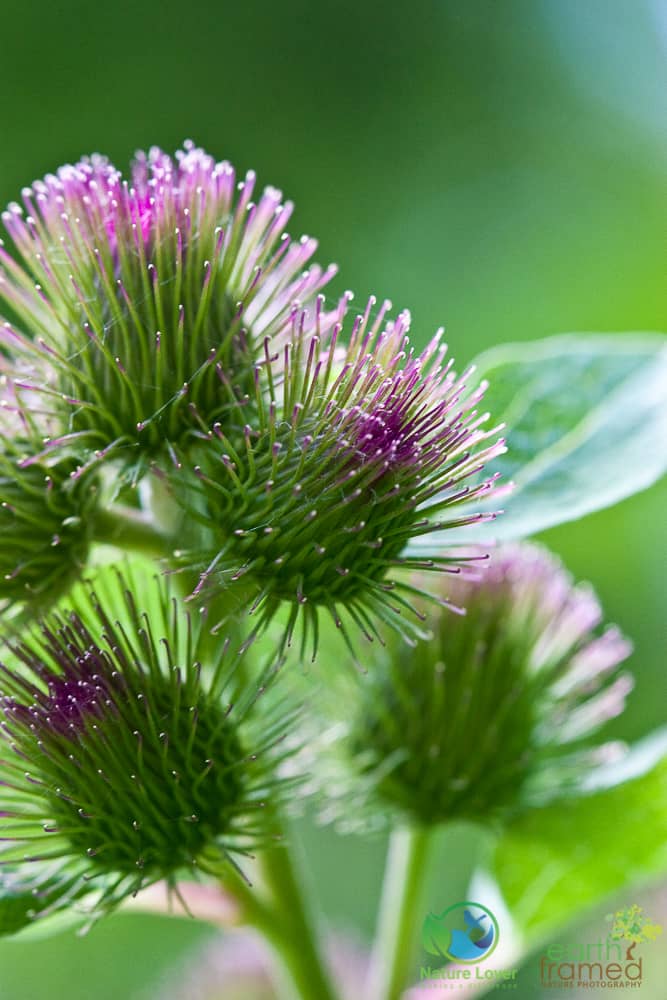
Back in 2007 we were travelling around the area and took our first hike up to the falls. Along the way we found many different wildflowers including the above Common Burdock which is found all over Ontario, usually in waste areas, pastures, open woods and roadsides. It’s leaves resemble those of Rhubarb but they are woolly on the bottom.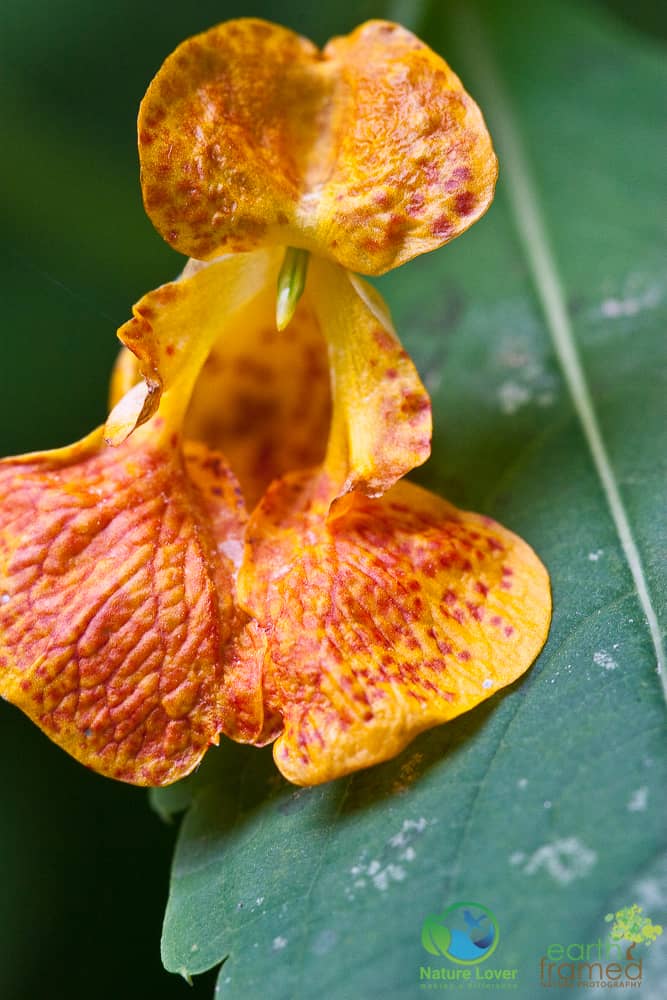
Spotted Jewelweed, also known as Spotted touch-me-nots, are often found near wetlands, rivers and ditches. These flowers form almost a shrub and can get to be 3 to 5 feet tall by the end of the season. The juice from the leaves and stems was used by First Nations’ people to treat poison ivy. 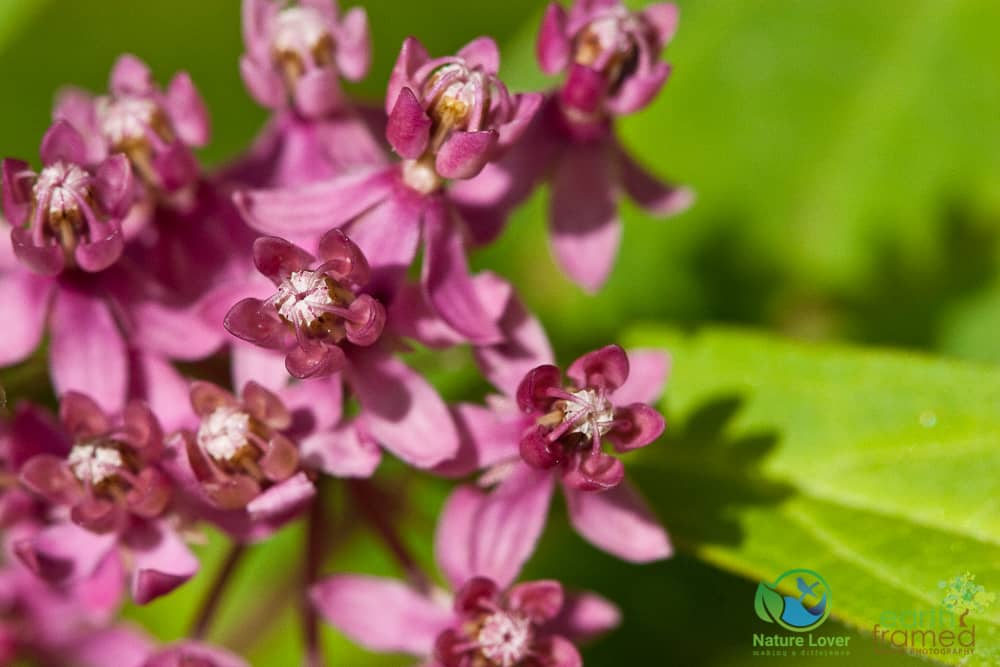
It was wonderful to spot a variety of milkweed growing along the trail. These plants are vital to monarchs because it’s the only plant that monarch caterpillars will eat. 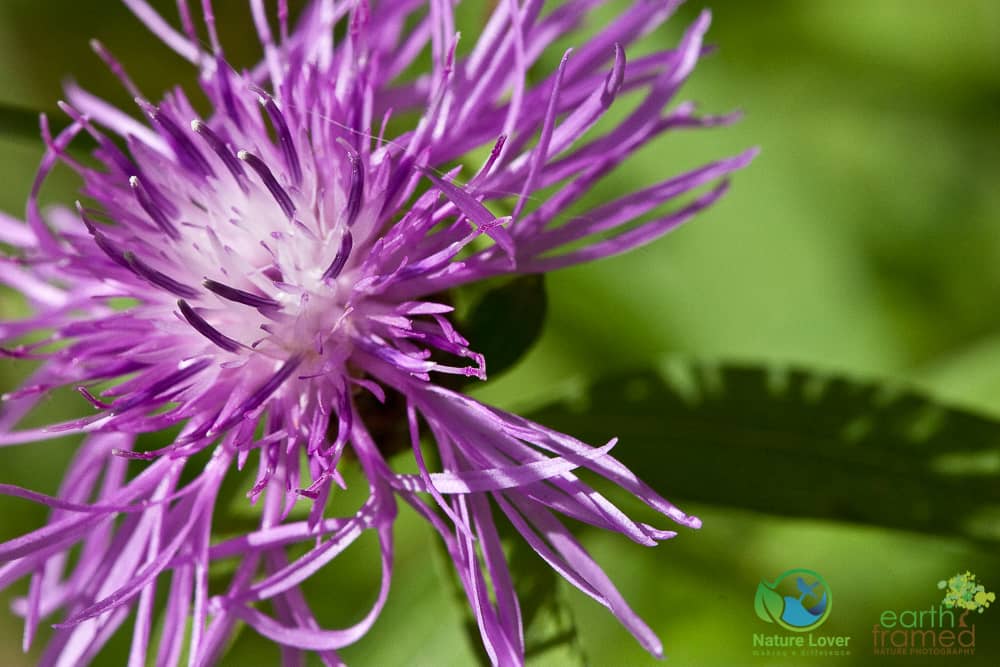
This beautiful, exotic looking flower is part of the sunflower family and is a type of Knapweed. There are several species that can be found in Ontario, but are not a native species. These plants, are extremely invasive and can be quite destructive in tall grass savannas and sand barren habitats. This plant impacts wildlife and directly threatens specific native herbs, wildflowers, trees and butterflies.
I’m not sure what this plant was, and it obviously was not in bloom since I did not capture an image of a flower. I just thought it was so delicate and wanted to document the beauty that nature shows us. 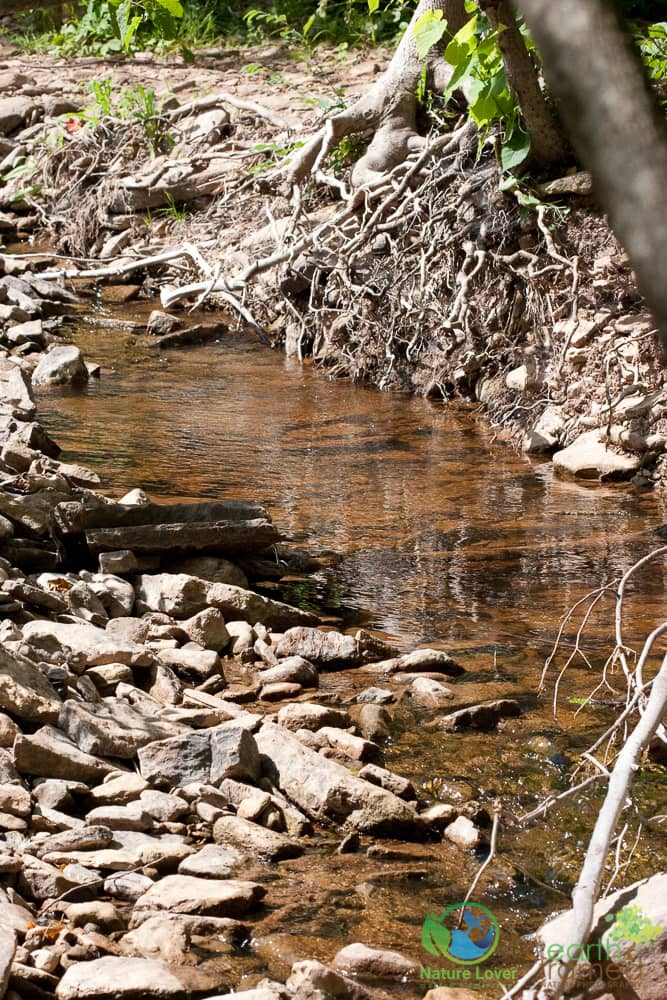
At this time of the year there is very little water flowing over the falls and down the stream. You can see erosion up the sides of the banks though.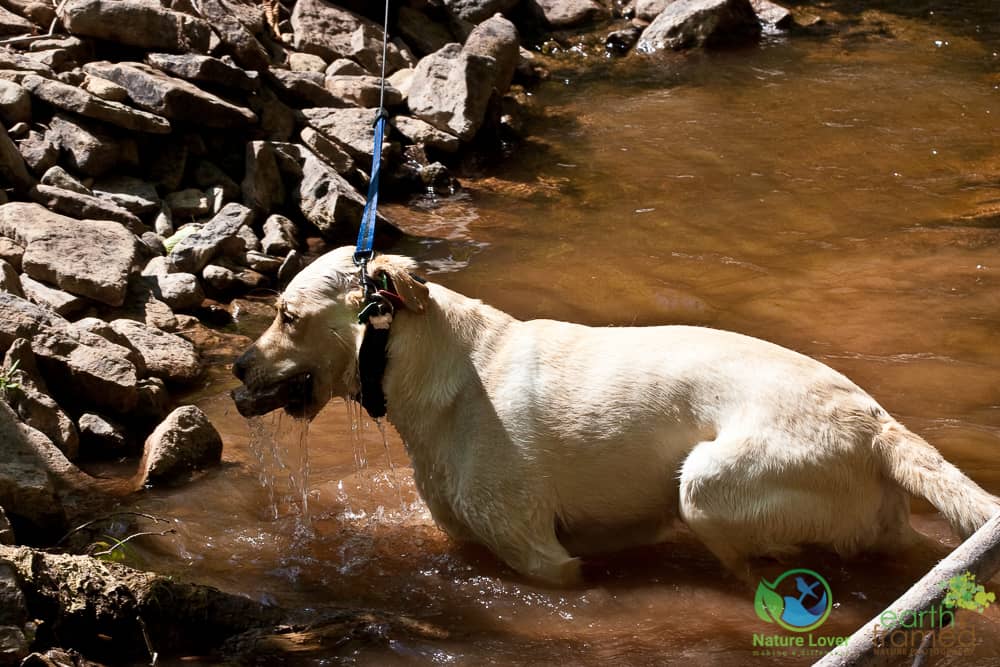
Maya thought there was plenty of water to get wet in and to remove a few rocks while she was there. She always had to be working if she was in the water.
Here’s another view of the shallow river. In the spring none of these rocks would be visible.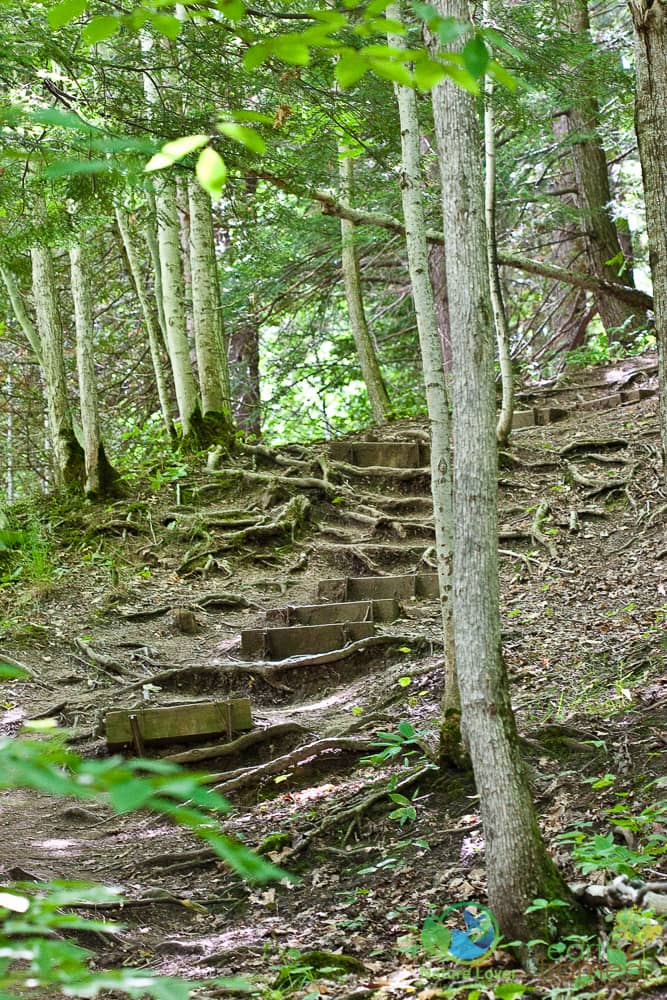
Homemade stairs were put into the side of the steep hill that leads to the top of the waterfall. As you can see this isn’t an accessible path and visitors should keep that in mind when planning their visit. 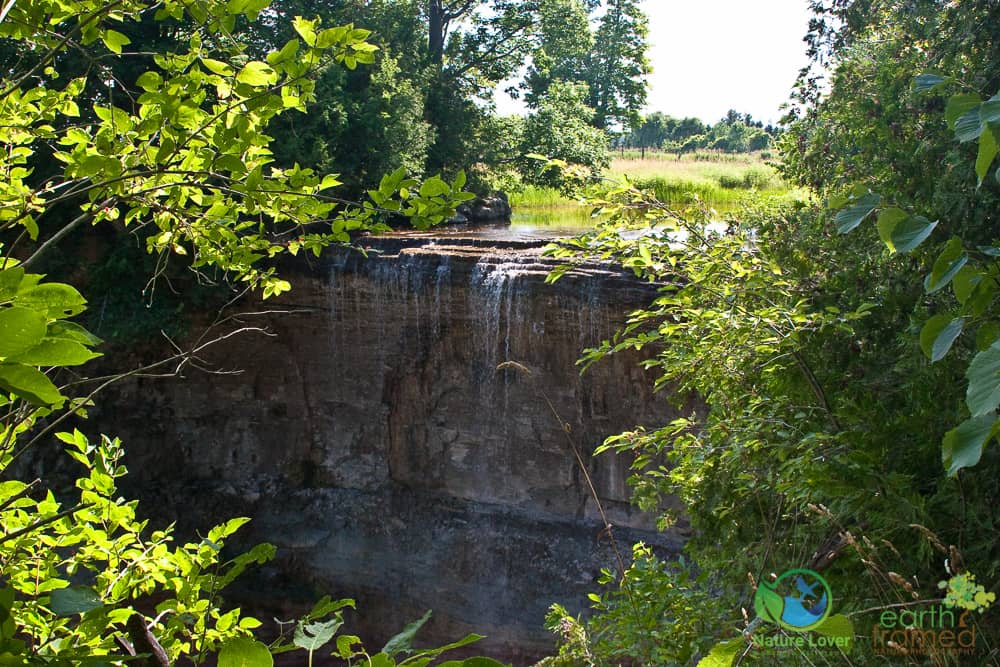
Here’s the view of the waterfall with it’s minimal amount of water finding its way over the step, Niagara Falls like edge. 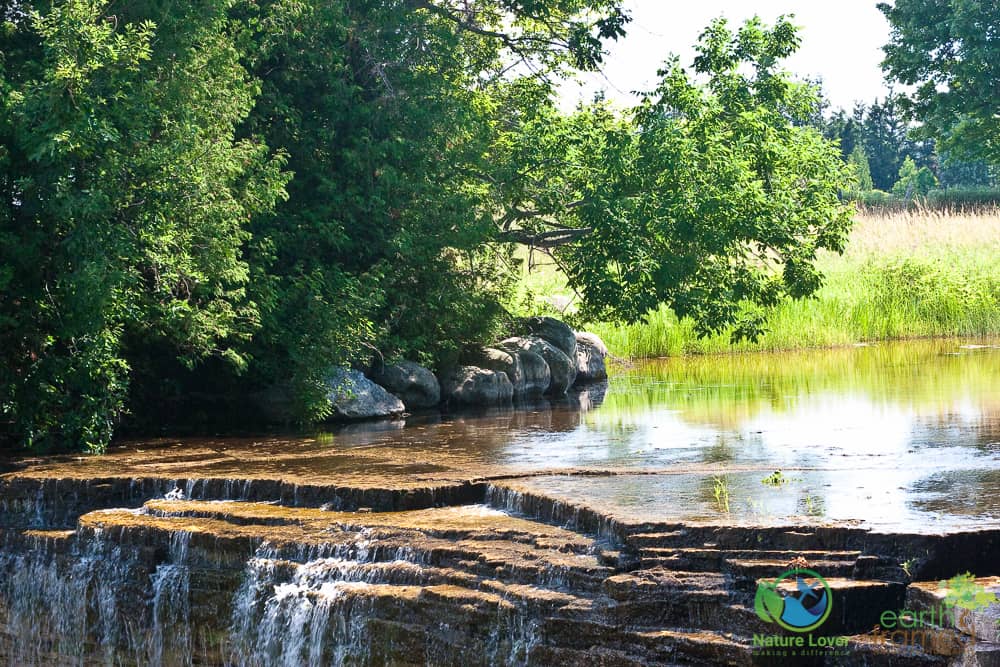
This view shows a little shallow layer of water flowing over the upper rocks and the meadow behind.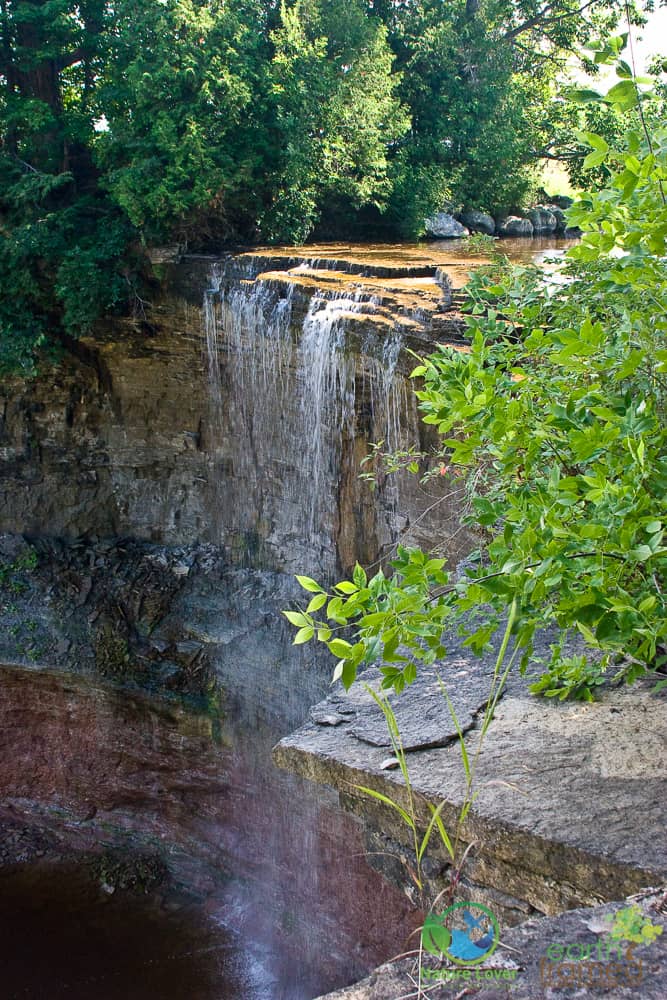
Check out the different layers of rock. You can see the Manitoulin and the red Queenston Formations very distinctly.
Each year more of the rocks erode and eventually fall off the waterfall. Here are some the rock pieces that use to be part of the waterfall’s shape.
The Owen Sound area features several really interesting waterfalls. If you are in the area you should definitely visit the area’s waterfalls and parks! We will have more posts from Inglis Falls, Jones Falls and other from the Bruce area in the upcoming months!
Sources:
“Indian Falls Conservation Area – Grey Sauble Conservation Authority.” Grey Sauble Conservation Authority, www1.greysauble.on.ca/portfolio/indian-falls-conservation-area/.
Ontario Invasive Plant Council. (2017, April). Spotted Knapweed ( Centaurea stoebe ) Best Management Practices in Ontario. Retrieved June 11, 2018.


